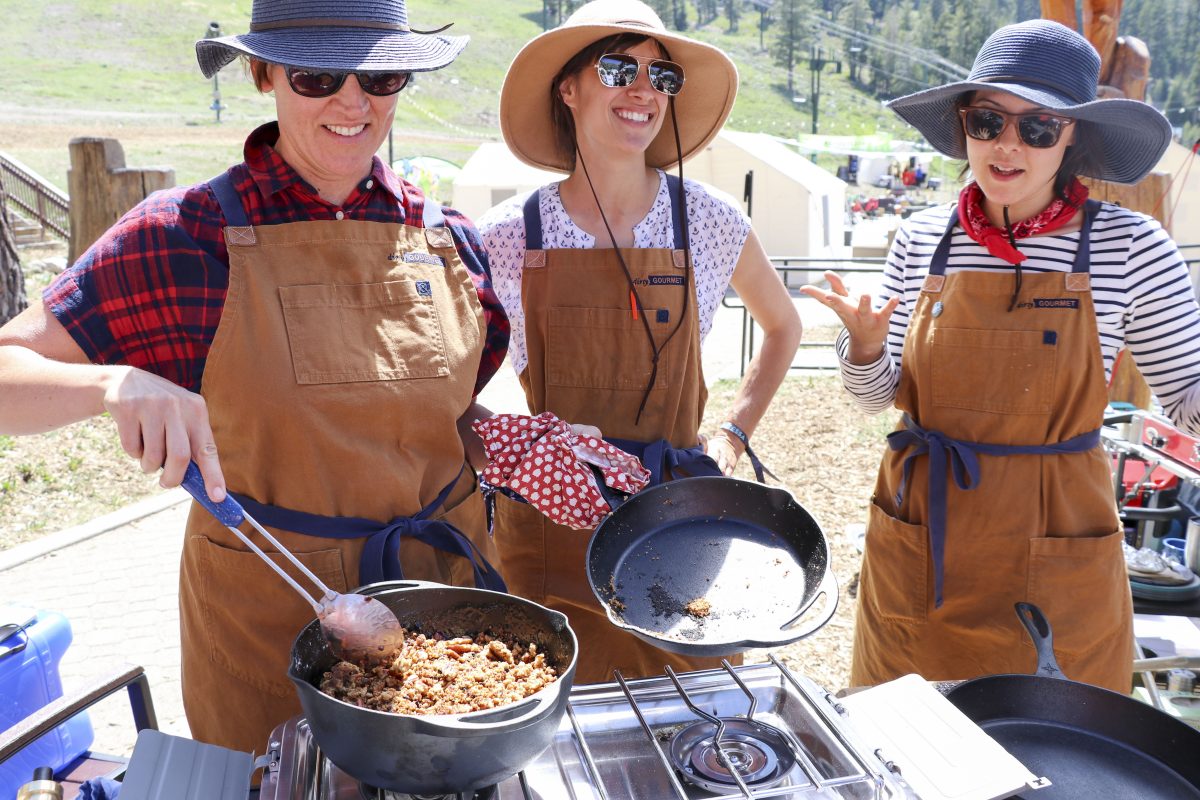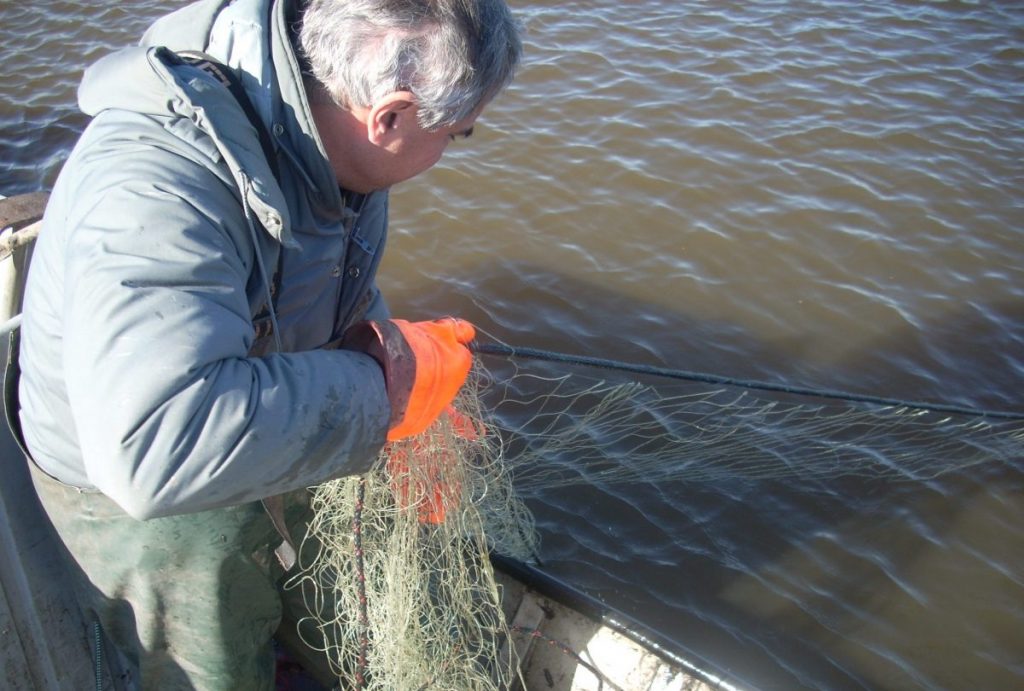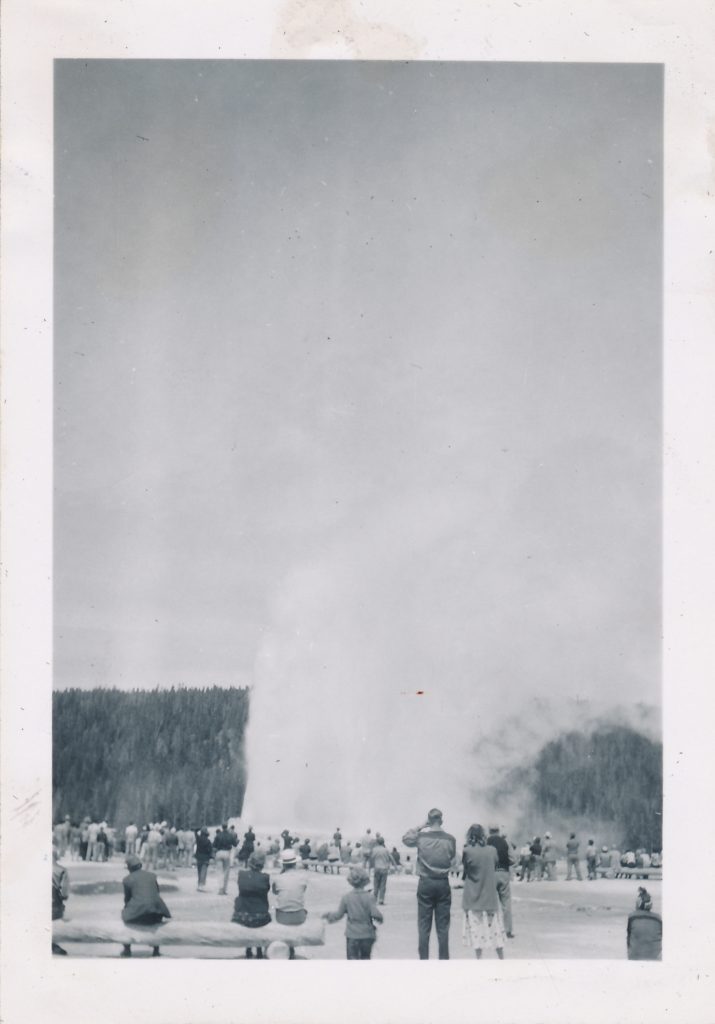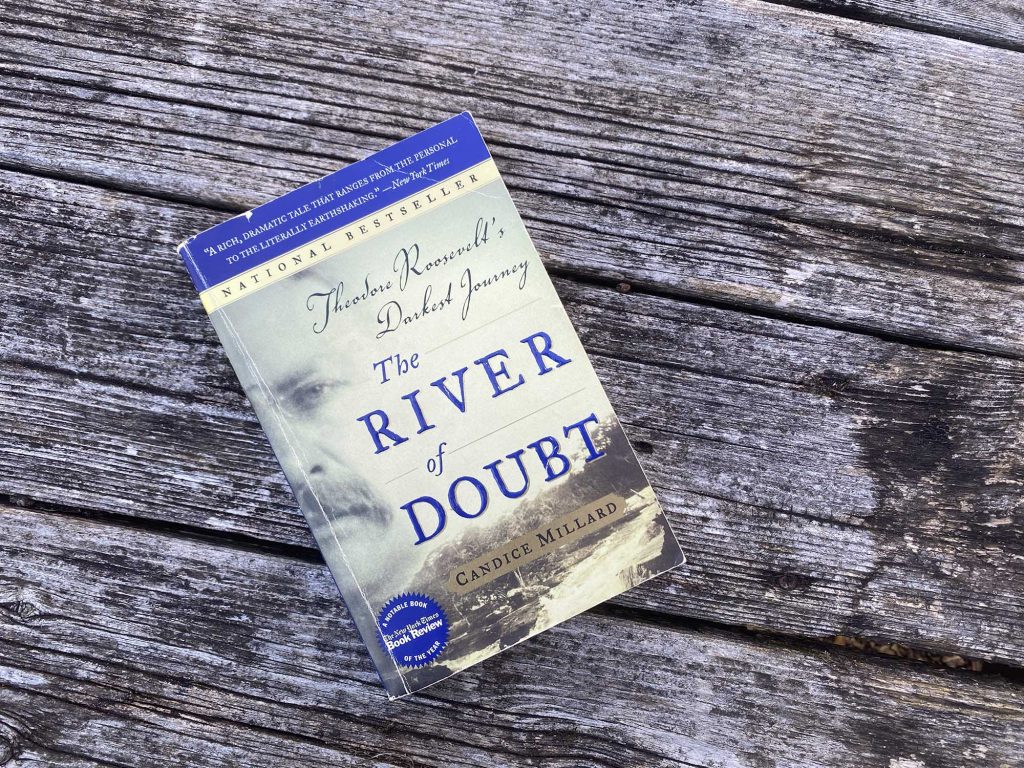This post contains affiliate links.
With all the preparation that goes into planning for outdoor adventures, it seems odd to Emily Nielson that food is often an afterthought.
“People will spend so much time prepping every aspect of their trip — from the location to every single piece of gear they’re going to take — and then so many of them just stop at the grocery store on their way out of town and pick up some peanut butter and jelly and leave food completely out of the experiential part of their adventure,” says Nielson.
Inspired to restore food’s place as an important aspect of any outdoor adventure, Nielson, her cousin Aimee Trudeau and their friend Mai-Yan Kwan launched a website to give people the resources to make their own outdoor meals. Called Dirty Gourmet, the site is organized by meal course — featuring everything from appetizers to beverages to snacks — and outdoor activity, including backpacking, bike touring, car camping, day trip and picnic recipes.
The blog’s success led them to publish a cookbook, Dirty Gourmet: Food for Your Outdoor Adventures, which offers recipes in three categories — on the trail, car camping and backcountry camping — as well as tips and techniques.
For the last few years, however, the threesome has shifted gears, focusing instead on outdoor catering, in addition to promoting the book.
“[We’ve been] working as camp chef services usually for large-scale events put on by outdoor industry companies,” says Nielson. “We’ve worked with REI, Sunset Magazine, Subaru, Snow Peak — a bunch of cool companies — [doing] their member or company campouts and that kind of thing.”
“The whole goal of our business is to make people feel like it’s is an approachable piece of their experience of going outside, to be able to cook for themselves.”
Going forward, this will remain their focus — with the addition of smaller events — as well as teaching the skills that they write about in Dirty Gourmet, which they do through in-person classes and webinars. While they no longer update the website, it will continue to serve as a resource for those who are interested in taking a more active role in their outdoor meal prep.
“The whole goal of our business is to make people feel like it’s is an approachable piece of their experience of going outside, to be able to cook for themselves and not feel like they need convenience — foods that are prepackaged and ready to go — all the time,” Nielson says. “It becomes such a huge part of the memory of the trip, and it can really delight. If you have a new person who’s never been camping before, it can really change their whole experience.”
Nielson recently spoke with us about the philosophy behind their venture and shared some outdoor meal prep advice and recipes.
When and how did Dirty Gourmet come about?
I’ve been working in the outdoor industry for a long time, and at the time, I was teaching outdoor experiential education at an outdoor science school, so I was living in the woods, eating camp-level food — the same menu every week for years. My cousin Amiee and our other partner Mai-Yan went on a bike tour across Canada one summer when I was finishing up my job at the outdoor science school. We all got done with all of that at the same time and came together with this idea of [providing] resources for camp food. They had been camping the entire time they were on their bike tour, and I had learned how tiring it can be to have to eat the same camp food for so long that it made it not very inspirational to go outside.
That was a big piece of it: We had this experience that we could share with people. We kind of did it for ourselves as sort of a hobby, to have a resource that we could share between the three of us for our future camping trips — and then it grew from there.
So it sounds like your own experiences helped shape your approach?
Yes, and on top of that, I am vegetarian, Aimee is now vegan, and Mai-Yan is more of an omnivore, so we’ve always had a lot of different types of dietary needs within our group. That was another piece of it.
It’s not easy to cook for everyone and make everyone happy. So having so many different types of dietary needs in one group was an inspirational reason for us to figure it out so that we could actually go [outdoors] and cook together.
Have you all always shared a love of the outdoors?
Definitely. With Aimee and I, our dads our brothers. We lived in Las Vegas, and they lived in LA. As kids, our dads had CB radios, and … I remember being in our car on our CB radio looking for them; they would be coming from the other direction, and we’d meet at Sand Dunes or different cool locations and camps our whole childhood.
We kind of helped Mai-Yan get into the outdoors in a more formal way. She grew up running around in the woods behind her grandparents house in Quebec, so she definitely already had a love for it, but when she came to LA, she hooked up with all of our families, too. We spent all of our time camping and playing outdoors, and we kind of introduced her to more of it.
Did any of you have an interest in or passion for cooking before launching Dirty Gourmet?
Aimee is the main cook. She grew up totally passionate about it and learned more formally how to be a cook. She majored in food science and was very into the whole food thing.
For me, it was very much just a functional thing. I became more interested in cooking as I got older because I wanted the self-reliance that came from being able to cook for yourself. I wanted to be able to eat what I wanted to eat, and I didn’t want there to be … something that was holding me back.
“I’m just kind of working my way through it, but I’ve been able to be successful that way, and I feel like that’s a big story for my readers — that it doesn’t matter, you don’t have to come from cooking to be able to cook for yourself in the outdoors.”
I’m really experimental — that’s my type of personality — so it was nice to not be afraid to try new styles and techniques. But I definitely am the one who makes the most mistakes and who doesn’t have real formal, beautiful cuts and style. I’m just kind of working my way through it, but I’ve been able to be successful that way, and I feel like that’s a big story for my readers — that it doesn’t matter, you don’t have to come from cooking to be able to cook for yourself in the outdoors.
I find your focus on food being an essential part of every outdoor adventure intriguing. What shaped this focus for you, and how has Dirty Gourmet tried to emphasize this?
I have spent a lot of time in the outdoor industry working retail and seeing how many camp cooking products there are and how the world constantly went toward convenience, trying to make people buy the really fast, easy, boil-in-a-bag meals. All of us realized how difficult it was to get what you really need out of those meals, and it really does limit people to even wanting to go outside sometimes.
If you [believe] that those are the only options for food and you happen to be vegetarian, gluten free, have an allergy or whatever it may be — or you just end up eating the same ones over and over — it can sound less appealing to go outside and have that adventure because food is definitely an important factor in your experience. It’s important for survival but also can be the comfort that gets you to the campsite that you want to get to that’s a little bit further away.
When we talk to people who are new to the outdoors, that is a huge factor for them that is very intimidating: “How do I [cook] when I don’t have my normal conveniences?” We wanted to make it a very approachable thing for people to be able to do.
What is your process like for coming up with and testing recipes? Do you all work together?
We all end up testing and creating about the same amount of recipes, and we’re always surprised at how different each one ends up being.
We come from [different] backgrounds. Mai-Yan has the most international background. She has a Chinese father and a French-Canadian mother, so she has all these international ideas of food and has shown us that there are a lot of great ingredients that lend themselves really nicely to the outdoors.
A lot of people start off thinking, “What is camp-friendly food?” For us, we go the opposite direction and say, “What is it that we actually like to eat and cook at home all the time, and how can we adjust that recipe to be more camp friendly?” So it’s kind of a fun little puzzle to figure out every time.
“A lot of people start off thinking, ‘What is camp-friendly food?’ For us, we go the opposite direction and say, ‘What is it that we actually like to eat and cook at home all the time, and how can we adjust that recipe to be more camp friendly?’”
I like to eat panang curry, for example; it is one of my favorite foods and one that we worked very hard on to try to figure out how to make it work in different camp settings. Usually, it just takes simplifying the number and types of ingredients — swapping out an ingredient for something quick-cooking, for example. Instead of using a regular rice, use the parboiled rice because it’s much quicker cooking. You’re going to get maybe a little bit different texture, but for the most part, you’re still going to be able to get that same experience outdoors. If you can find a dehydrated version of something rather than a fully hydrated version, then it’s just simplifying as you go and making it work for your type of trip.
What is the process like for how you test your recipes?
We do have to test our recipes several times to get them right. So we’ll begin by testing them out at home, and then, if it turns out pretty good, I’ll send it over to the other two, and they’ll test it at home. Then, whoever happens to be going on a camping trip next — whatever type of trip it is — they will try to adjust it for that particular trip. We have definitely had a lot of failed meals on camping trips because of this process and having to kind of figure it out, but that is the easiest way to do it, to get out there and try it with different people.
When you’re creating recipes, do you try to take into consideration the nutritional components (protein, fiber, sugar, fat, etc.) that people will need for different types of outdoor activities?
When it comes to building recipes for the general public, we can’t be too specific with the nutrition. We aren’t official nutritionists, and there are so many different factors that go into the nutrition that’s needed for the particular human as well as the particular trip. If you’re going on a 16-mile hike up an over an 11,000-foot pass, you’re going to need a whole lot more calories than if you’re just going 2 miles in with your kids and sitting by a lake for three days.
In general, we stick to the rule of thumb that you should be eating about 100 calories an hour throughout your hiking day, and generally, at least for us, that seems to work. So we always have enough snacks available to be able to stop every hour and snack on a small amount of calories at a time. We have some good protein-rich snack options in our cookbook.
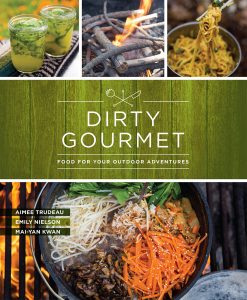 The other mindset that we have is that if you get to camp and have this terrible meal that has no flavor and no interest built into it, but it’s fully packed with calories and all of those components, you’re still probably not going to eat the whole thing because it [doesn’t taste good]. If you have a generally well-balanced meal, you’ll eat the whole thing because you’re excited about it and it’s delicious, so you’ll end up getting more of the calories that way than you would have if it was just a little block of dehydrated [food].
The other mindset that we have is that if you get to camp and have this terrible meal that has no flavor and no interest built into it, but it’s fully packed with calories and all of those components, you’re still probably not going to eat the whole thing because it [doesn’t taste good]. If you have a generally well-balanced meal, you’ll eat the whole thing because you’re excited about it and it’s delicious, so you’ll end up getting more of the calories that way than you would have if it was just a little block of dehydrated [food].
We try to always have [our meals] be a base of carbs with some protein and some sort of fibrous vegetable matter, and then we always want to think about flavor and texture — which are very easy to lose when you start getting into camp food. A lot of times, you’re trying to make one-pot meals, and they can easily end up being mush, so adding some crunchy toppings or a little brightness from a squeeze of lemon or something like that adds a lot of interest and makes it so much more delectable so that everyone’s going to eat it all up.
What is one of the most difficult aspects of making your own outdoor meals?
For a lot of people, protein’s the hardest thing to think about when it comes to outdoor cooking because most people think about meat when you talk about protein, and meat of course is one of the most perishable, dangerous foods to bring into the backcountry. So we have a lot of vegetarian protein sources that we talk about in a lot of our recipes because we want people to know that there are other ways to get it in a much less perishable way.
Of course, jerky is something that’s very easy to shred on top that will add texture, flavor and protein to your meal. So have some jerky as a snack and maybe some peanuts, and then those things can turn into toppings that add flavor to your meal later.
What are some simple protein-packed snack recipes you recommend?
One of my favorites in our cookbook is a cereal snack mix. Instead of just going with the traditional flavoring, you can really play with the combinations of flavors to your liking.
The one we have in our cookbook is an Indian spice snack mix. It still has the base of cereal, but it also has peanuts, some fresh potato chips — which add a lot of extra warmth and deliciousness — and then some raisins and a lot of Indian spices, so mustard seeds, turmeric and curry powder, that kind of thing. That’s a really easy one to make. We’ve also done a Thai curry-flavored version, but you could go a bunch of different directions with that.
One of my other favorites is what we call pie bombs. It’s like a pie crust filled with anything you want and baked ahead of time. It’s kind of like a hand pie, but they’re really compact and pretty lightweight, and you can get a lot of protein and flavor in them. The one that’s in our book has some barbecue sauce and, I think, sausage and cheese, so it’s nice and saucey, but it’s not messy because it’s all filled into the pie crust. It’s a really great option and very adaptable.
“Start with a recipe that you know very well or a recipe that is easy to execute that’s already pre-written for you instead of trying to come up with something completely from scratch.”
Is that something that would need to stay cold?
That’s another piece of nutrition — that whole danger zone. The official rule of the danger zone is that it should be no more than four hours outside of refrigeration. So a lot of times, we’ll build things like that expecting that it’s going to last about a half a day in your pack because you’re going to eat it at lunch. If it’s cold and you’re in the snow, then [it could last longer], but if it’s really warm, then it may not even last that four hours.
You can easily use a vegetarian sausage or something else that is a little bit less perishable.
Do you have any advice for those thinking about making their own outdoor meals?
Start with a recipe that you know very well or a recipe that is easy to execute that’s already pre-written for you instead of trying to come up with something completely from scratch, and then adjust just one or two pieces of it to make it work for you. Doing as much prep as you can at home is huge.
And, of course, always have some sort of backup plan. I always have a box of mac and cheese or ramen or something like that just in case — just for survival purposes.
What are some of Dirty Gourmet’s most popular recipes, and which one is your all-time favorite?
That’s a very hard question. One of our most popular is a car-camping appetizer: our goat cheese and herb-stuffed mini peppers. That is a really fast, easy recipe that you can do in a foil pouch or on a cast iron skillet over a hot campfire. [It’s] a really great thing to have ready to go.
For a sweet snack for on the trail — the granola brittle. It’s like granola, but instead of being completely loose or in bar form, it’s sort of an in-between, brittle texture, and it’s really popular. It’s nice to bring these big slabs of granola with you, throw them in your pack, and as they break up, it’s no problem because they just turn into normal granola. The one in our book is a cashew coconut black sesame flavor combination.
I’ve always been super impressed with our backpacking skillet enchilada recipe; I’ve made those in a car camping situation as well. They’re very versatile. [It’s] a recipe that is so filling. You get the texture of the tortilla and all of that without having a whole lot of extra weight.

